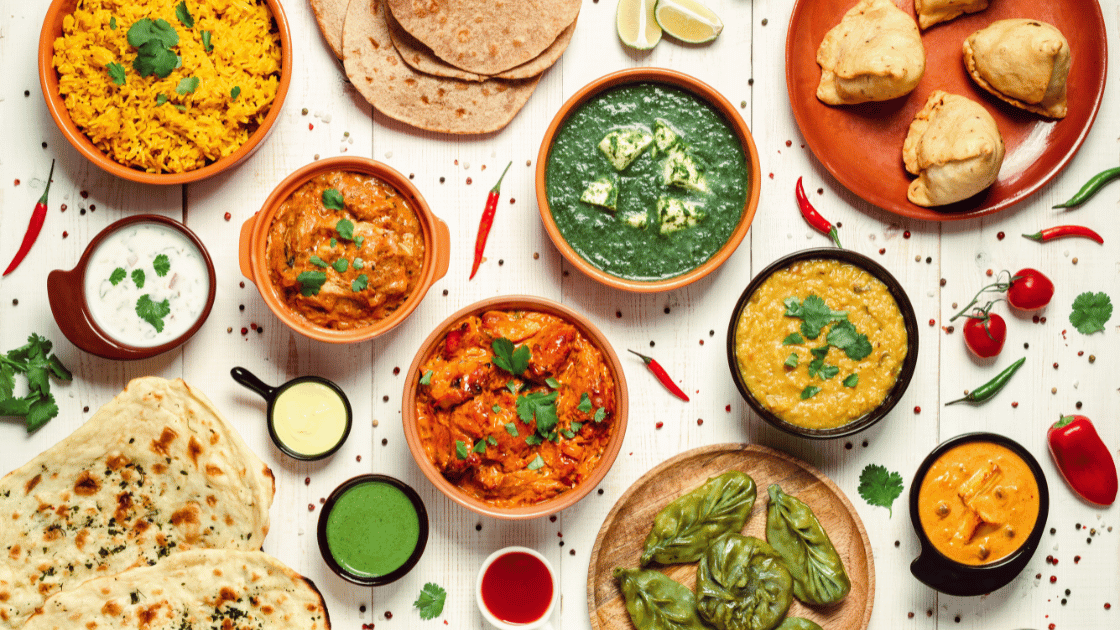Top Tastiest Types of Food Cuisine in the USA

Introduction to American Cuisine
American cuisine is a melting pot of flavors, textures, and cooking techniques influenced by a wide array of cultures from around the world. This diverse blend of culinary traditions has shaped a unique food landscape that reflects the multicultural fabric of the United States.
What Makes American Cuisine Unique?
There are several key points to note about American cuisine:
- Diversity and Fusion: American cuisine is known for its diversity and uniqueness stemming from the fusion of various culinary traditions.
- Cultural Influences: Over the centuries, different cultures have had a significant influence on American food, shaping its evolution into what it is today.
- Popular Dishes: Some of the most iconic American dishes include Thanksgiving dinner, cheeseburgers, Reuben sandwiches, hot dogs, Philly cheesesteaks, nachos, macaroni and cheese, chicken pot pie, chili, apple pie, biscuits and gravy, pizza, Nashville hot chicken, and more.
- Ethnic Foods: Across the United States, you can find a wide array of ethnic foods representing various cuisines from around the world, ranging from Italian and Mexican to Chinese and Indian.
This rich culinary tapestry not only showcases the history and heritage of the country but also reflects the ongoing contributions of immigrant communities to the gastronomic landscape.
The Influence of Different Cultures on American Cuisine
American cuisine reflects the country’s multicultural society, with influences from all over the world. The diverse food options available in the U.S. are a testament to the fusion of flavors and culinary traditions brought by immigrants from various countries. Let’s explore how immigration and historical events have shaped American cuisine into a melting pot of flavors and culinary techniques.
Immigration and Culinary Exchange
Waves of immigrants throughout history have contributed their traditional recipes to American food culture. For example:
- Italian immigrants brought their love for pasta, pizza, and tomato-based sauces, which are now staples in American households.
- Mexican immigrants introduced dishes like tacos, enchiladas, and guacamole that have become iconic in American cuisine.
Historical Events and Food Adaptation
Historical events have also played a significant role in shaping American cuisine. For instance:
- The colonization of America by European powers led to the introduction of new ingredients and cooking methods.
- Native American foods like corn, potatoes, and squash were incorporated into European cooking styles, resulting in dishes like cornbread and mashed potatoes.
Regional Specialties
Each region in the U.S. has its own unique culinary traditions influenced by different cultures. Some examples include:
- The Creole and Cajun cuisines of Louisiana blend French, African, Spanish, and Native American flavors.
- In New England, seafood dishes like clam chowder showcase the region’s maritime heritage.
Constant Evolution
American cuisine continues to evolve as new immigrant communities contribute their traditional recipes to the food landscape. This ongoing exchange of culinary knowledge has enriched American food culture with diverse flavors from around the world.
American cuisine is a celebration of cultural diversity that brings people together through food. The combination of traditional dishes from various ethnicities has created a truly unique culinary experience in the United States. From Italian-American fusion to regional Mexican gems and authentic Chinese eateries, American cuisine offers a delightful array of flavors that cater to every palate.
1. Italian Cuisine in the U.S.
Italian cuisine has undeniably left a significant mark on the American culinary landscape, with its iconic pasta dishes, pizzas, and gelato becoming beloved staples across the country. However, Italian-American fusion cuisine has also played a pivotal role in shaping the flavors of Italian food in the U.S. Let’s dive into the unique blend of traditional Italian recipes and locally sourced American produce that has given rise to innovative dishes like California-style pizzas topped with unconventional toppings.
Italian-American Fusion: When Old Meets New
Italian-American chefs have skillfully combined authentic Italian cooking techniques with the abundance of fresh, local ingredients available in the United States. This fusion has resulted in a delicious marriage of old-world flavors and contemporary culinary creativity. Traditional Italian dishes have been reimagined to reflect the diverse and dynamic food culture in America, offering new and exciting dining experiences for food enthusiasts.
In this modern approach to Italian cuisine, classic recipes are often enhanced with a touch of innovation, incorporating regional American ingredients to create distinctive flavor profiles. For example, California-style pizzas have gained popularity for their thin crusts and imaginative toppings such as barbecued chicken, smoked salmon, or artichokes, which may not be commonly found on pizzas in Italy. These inventive combinations exemplify how Italian-American fusion cuisine continues to evolve and captivate the taste buds of diners seeking unique gastronomic adventures.
By seamlessly blending Italian culinary heritage with the rich offerings of American agriculture and culinary experimentation, Italian-American fusion cuisine has carved out its own place in the vibrant tapestry of American food culture. This ongoing culinary dialogue between tradition and innovation underscores the adaptability and dynamism inherent in both Italian and American cuisines.
A Culinary Journey Through Italy: Regional Specialties in the U.S.
Italian cuisine has become an integral part of American food culture, with its popularity evident in the countless Italian restaurants and pizzerias that dot the streets of cities across the United States. The influence of Italian immigrants on American culinary traditions cannot be overstated, as they brought their pasta-making skills, pizza traditions, and love for gelato to cities like New York and Chicago, shaping the American palate for generations to come.
Pasta: From Italy to America
When exploring Italian cuisine in the U.S., it’s impossible not to mention the beloved pasta dishes that have become a staple in American households. From classic spaghetti with meatballs to rich and creamy fettuccine Alfredo, pasta dishes are a go-to comfort food for many Americans.
- Each region of Italy has its own unique pasta specialties, such as lasagna from Emilia-Romagna or orecchiette with broccoli rabe from Puglia.
- These regional dishes have found their way onto menus in Italian-American restaurants, offering a taste of Italy’s diverse culinary heritage.
Pizza: From Naples to New York (and Beyond)
Pizza is another Italian favorite that has been embraced wholeheartedly by Americans. While New York-style thin crust pizza and Chicago deep-dish pizza have become iconic representations of American pizza culture, there are countless other variations enjoyed across the country.
- Italian-American chefs have taken this traditional dish and put their own spin on it, creating California-style pizzas topped with unconventional ingredients like arugula, goat cheese, and prosciutto.
- This fusion of Italian recipes with locally sourced ingredients showcases the adaptability and creativity of Italian-American cuisine.
Gelato: A Taste of Italy’s Sweet Side
No exploration of Italian cuisine would be complete without mentioning gelato, the smooth and creamy frozen dessert that originated in Italy. Gelato shops can be found in nearly every major city in the U.S., offering a wide array of flavors ranging from classic pistachio to unique combinations like lavender honey or olive oil.
- Whether enjoyed in a cone or cup, gelato provides a refreshing treat that transports you straight to the streets of Italy.
The Richness of Italian Regional Cuisines
Italian cuisine in the U.S. extends beyond pasta, pizza, and gelato, with each region of Italy contributing its own distinctive dishes. From the hearty pasta dishes of Southern Italy to the seafood creations of the Amalfi Coast, there is a world of flavors waiting to be explored.
By celebrating regional Italian cuisines, Americans have embraced the diversity and richness of Italian culinary traditions, making it one of the tastiest types of food cuisine in the U.S.
2. Mexican Cuisine in the U.S.
The Spicy Side of Mexican Food: Exploring Chile Varieties
Mexican cuisine in the U.S. is known for its bold flavors and diverse use of chili peppers. These fiery ingredients add depth and complexity to dishes, making them a hallmark of Mexican gastronomy. Here’s a closer look at the spicy elements that define Mexican cuisine:
Diverse Chili Varieties
Mexican cuisine utilizes an assortment of chili peppers, each contributing its unique flavor profile and heat level to dishes. Some popular types of chilies used in Mexican cooking include:
- Jalapenos: These are one of the most recognizable chili peppers in Mexican cuisine, offering a moderate level of heat and a distinct grassy flavor.
- Poblanos: Known for their rich, earthy taste, poblanos are often used in the classic dish, chiles en nogada, where they are stuffed with a savory meat filling and topped with a creamy walnut sauce.
- Habaneros: These small, lantern-shaped chilies pack a significant punch, delivering intense heat with fruity undertones.
The use of these and other chili varieties in Mexican cuisine reflects the country’s diverse culinary heritage and regional cooking traditions. From the smoky heat of chipotle peppers to the vibrant spiciness of serranos, each chili adds its own distinctive character to Mexican dishes.
In addition to providing heat, chilies also contribute nuanced flavors that enhance the overall taste experience. Whether they are used fresh, dried, or roasted, these peppers play an integral role in creating the vibrant and robust flavors that define authentic Mexican cuisine.
Embracing the Spices: While some may associate Mexican food primarily with heat, it’s important to note that the cuisine encompasses a wide range of flavors beyond spiciness. The use of spices like cumin, coriander, and cinnamon adds layers of complexity to dishes such as mole sauces, birria stews, and traditional tamales.
Mexican cuisine in the U.S. continues to captivate diners with its rich tapestry of flavors and textures, offering a culinary journey that extends far beyond just heat and spice. As diners explore the intricacies of Mexican gastronomy, they discover a symphony of tastes that celebrates the country’s vibrant culinary heritage.
Beyond Tacos: Regional Gems in Mexican Gastronomy
Mexican cuisine in the U.S. is not just about tacos and burritos. There are lesser-known regional dishes that offer a delightful culinary experience. Here are some highlights:
- Ceviche: This popular dish from the coastal regions of Mexico features raw fish marinated in citrus juices, mixed with onions, tomatoes, and cilantro.
- Chiles en Nogada: A specialty from Puebla, this dish consists of poblano chilies stuffed with a unique blend of ground meat, fruits, and nuts, topped with a creamy walnut sauce and garnished with pomegranate seeds.
- Mole: This complex sauce hails from Oaxaca and comes in various forms such as mole negro, mole coloradito, and mole verde. It’s made with a rich blend of chilies, chocolate, nuts, seeds, and spices.
- Barbacoa: Traditionally made with lamb or goat, this slow-cooked meat dish originates from the state of Hidalgo and is known for its tender texture and flavorful juices.
- Tlayudas: Often referred to as “Mexican pizzas,” these large crispy tortillas are topped with refried beans, cheese, meats, avocado, and salsa.
These dishes showcase the diverse regional cuisines of Mexico beyond the well-known Tex-Mex favorites. Exploring these hidden gems can open up a world of flavors and traditions that contribute to the rich tapestry of Mexican gastronomy.
3. Chinese Cuisine in the U.S.
Chinese cuisine has made a significant impact on the American culinary scene, with its diverse flavors, vibrant colors, and unique cooking techniques. From popular stir-fry dishes to delicate dim sum, Chinese food has become a staple in the United States. In this section, we will explore the evolution of Chinese restaurants in America and shed light on the controversy surrounding one of its most famous desserts.
From Takeout to Authentic Eateries: The Evolution of Chinese Restaurants in America
Chinese food in America has come a long way from its humble beginnings as primarily takeout-focused joints. Over the years, Chinese dining establishments have evolved to showcase regional Chinese cuisines and provide an authentic dining experience for customers. This evolution can be attributed to several factors:
1. Immigration and Cultural Exchange
The influx of Chinese immigrants to the United States in the 19th and early 20th centuries brought with them their culinary traditions and recipes. As Chinese communities grew, so did the demand for authentic Chinese food beyond familiar dishes like General Tso’s chicken and sweet and sour pork.
2. Growing Appreciation for Regional Cuisines
As Americans became more adventurous in their culinary tastes, there was a growing appreciation for the distinct regional cuisines within China. Today, you can find restaurants specializing in:
- Sichuan cuisine known for its bold and spicy flavors
- Cantonese cuisine celebrated for its delicate dim sum
- Hunan cuisine famous for its fiery dishes
3. Chef Innovation
Chinese-American chefs have played a crucial role in elevating the status of Chinese cuisine by incorporating local ingredients and innovative cooking techniques. They have adapted traditional recipes to suit American palates while staying true to their culinary roots. This fusion of flavors has resulted in exciting dishes that blend both cultures seamlessly.
Chinese restaurants across America now offer a wide range of options beyond your typical takeout fare. These establishments provide an immersive dining experience, complete with authentic flavors, elegant presentation, and knowledgeable staff who can guide you through the menu.
The Controversy Behind Fortune Cookies: Are They Truly Chinese?
Fortune cookies have become synonymous with Chinese cuisine in America. However, the truth behind their origins is quite different from popular belief. Despite their association with Chinese culture, fortune cookies are not actually a traditional Chinese dessert.
Fortune cookies first appeared in the early 20th century in California and were likely inspired by Japanese senbei crackers. They gained popularity among Chinese restaurants as a unique way to end a meal and provide a whimsical message to customers. Over time, fortune cookies became an integral part of the American Chinese dining experience.
While they may not be authentically Chinese, fortune cookies have become an iconic symbol of Chinese cuisine in America. Today, you can find variations of fortune cookies in different flavors and shapes, adding a touch of fun and surprise to the end of your meal at a Chinese restaurant.
Chinese cuisine continues to captivate American taste buds with its rich flavors, intricate cooking techniques, and diverse regional specialties. Whether you’re enjoying a hearty plate of General Tso’s chicken or savoring delicate soup dumplings, exploring the world of Chinese food in America is an adventure that promises to delight and surprise.
The Controversy Behind Fortune Cookies: Are They Truly Chinese?
Chinese cuisine has gained immense popularity in the U.S., with dishes like stir-fry, dim sum, and of course, fortune cookies. While the first two are undeniably part of traditional Chinese cuisine, the same cannot be said for fortune cookies. In this section, we will explore the history of Chinese immigrants in America and how they adapted their culinary traditions to suit local tastes while preserving their heritage.
How Chinese Immigrants Influenced American Cuisine
Chinese immigrants began arriving in the United States in large numbers during the mid-1800s, primarily seeking opportunities during the California Gold Rush. As they settled in different parts of the country, they faced various challenges, including language barriers and discrimination.
To make a living, many Chinese immigrants started opening restaurants and cooking establishments. However, they quickly realized that their traditional dishes were not appealing to most Americans at that time. American palates were accustomed to bold flavors and meat-centric meals, which were quite different from the lighter and vegetable-focused Chinese cuisine.
The Birth of American-Chinese Cuisine
In order to cater to the local tastes and attract more customers, Chinese immigrants began modifying their recipes by incorporating familiar ingredients and cooking techniques. This gave rise to what is now known as American-Chinese cuisine or Chinese-American cuisine.
American-Chinese dishes typically feature a combination of meats (such as chicken, beef, or shrimp), vegetables (often broccoli or bell peppers), and a flavorful sauce. These dishes are usually served with steamed or fried rice.
While American-Chinese cuisine may not be an accurate representation of traditional Chinese cooking, it has undoubtedly become a beloved part of American food culture.
Unveiling the Mystery of Fortune Cookies
Now let’s address the elephant in the room – fortune cookies. Despite being commonly associated with Chinese restaurants and takeout meals, fortune cookies are not actually a traditional Chinese dessert.
Contrary to popular belief, fortune cookies originated in early 20th century California, not in China. They were created by Japanese immigrants who were running confectionery shops in San Francisco. These early versions of fortune cookies were larger and had a more cake-like texture compared to the crisp and small cookies we know today.
It wasn’t until after World War II that fortune cookies gained significant popularity and became synonymous with Chinese cuisine. Chinese-American entrepreneurs began mass-producing them, and they eventually made their way into Chinese restaurants across the country.
So, the next time you crack open a fortune cookie at the end of your meal, remember that it may not be an authentic Chinese treat, but rather a product of cultural fusion and culinary evolution.
4. Indian Cuisine in the U.S.
Indian cuisine has become increasingly popular in the United States, with its bold flavors and diverse range of dishes captivating the taste buds of many Americans. From fragrant curry dishes to freshly baked naan bread and crispy samosas, Indian cuisine offers a delightful culinary experience. One of the key aspects that sets Indian cuisine apart is its extensive use of spices, which add depth and complexity to each dish.
The Spice Trail: Key Ingredients in Indian Cooking
Spices play a crucial role in Indian cooking, elevating the flavors and creating a harmonious balance in every bite. Here are some essential spices used in Indian cuisine:
- Turmeric: Known for its vibrant yellow color, turmeric adds both flavor and health benefits to Indian dishes. It has a warm and earthy taste and is often used in curries and rice preparations.
- Cumin: Cumin seeds have a nutty and slightly smoky flavor that enhances the taste of various Indian recipes. They are commonly used in spice blends, such as garam masala, as well as in lentil dishes and vegetable curries.
- Cardamom: With its distinct sweet and floral aroma, cardamom is a prized spice in Indian cuisine. It is used in both savory and sweet dishes, including biryanis, chai tea, and desserts like kheer (rice pudding).
- Coriander: Coriander seeds have a citrusy and slightly sweet flavor that adds depth to curries, chutneys, and marinades. The ground coriander powder is a common ingredient in many spice blends.
- Mustard Seeds: Mustard seeds are often tempered or roasted before being added to Indian dishes. They have a nutty and pungent flavor that enhances the taste of pickles, curries, and stir-fried vegetables.
These spices are just a glimpse into the rich tapestry of flavors found in Indian cuisine. Each region in India has its own unique spice blends and cooking techniques, resulting in a wide variety of dishes that cater to different tastes and preferences.
Indian cuisine in the U.S. goes beyond just the spices. It also includes a wide array of vegetarian and vegan options, making it a popular choice for those with dietary restrictions or preferences. From creamy paneer tikka masala to aromatic dal (lentil) dishes and flavorful biryanis, there is something for everyone to enjoy.
Whether you visit a traditional Indian restaurant or try your hand at cooking Indian recipes at home, the vibrant flavors and aromatic spices of Indian cuisine are sure to transport you on a culinary journey like no other.
So, next time you’re craving an explosion of flavors, consider exploring the world of Indian cuisine right here in the U.S. You might just discover your new favorite dish!
Vegetarian Delights: The Rise of Plant-based Indian Dishes in the U.S.
Indian cuisine in the U.S. is not just about curry dishes, naan bread, and samosas. It’s a vibrant tapestry of flavors and spices that has captured the palates of many Americans. The popularity of Indian cuisine in the U.S. is evident in the widespread availability of these dishes and the fusion culinary creations that incorporate Indian flavors and spices.
Influence of Vegetarianism
Explore the influence of vegetarianism in Indian culture and how it has shaped the availability of meatless Indian dishes in the U.S.
Vegetarian Curries
Highlight popular vegetarian curries that have become go-to choices for those seeking plant-based options with an explosion of flavors.
The rise of plant-based Indian dishes in the U.S. reflects not only a growing trend towards vegetarianism but also an appreciation for the rich tapestry of Indian flavors. From aromatic lentil dals to creamy paneer curries, these vegetarian delights offer a diverse and satisfying culinary experience for both vegetarians and non-vegetarians alike.
The seamless integration of vegetarian Indian dishes into the American food landscape showcases the adaptability and universal appeal of this vibrant cuisine. As more people embrace plant-based eating, these flavorful offerings continue to find their place on menus across the country, enriching the American culinary scene with their aromatic spices and exotic flavors.
5. Japanese Cuisine in the U.S.
Japanese cuisine has made a significant impact on the American food scene, with its diverse array of flavors and culinary traditions. From delicate sushi to comforting ramen, Japanese dishes have become a staple in the U.S. dining culture.
Beyond Raw Fish: Exploring Different Types of Sushi
- Nigiri: This traditional style of sushi features a slice of raw fish, typically salmon or tuna, atop a small mound of vinegared rice. The simplicity of nigiri allows the quality of the fish to shine through.
- Maki: Maki rolls consist of various ingredients, such as fresh vegetables, seafood, and sometimes tropical fruits, wrapped in seaweed and rice. The rolls are then sliced into bite-sized pieces and often served with soy sauce and wasabi.
- Sashimi: Unlike sushi, sashimi is not accompanied by rice. Instead, it consists solely of thinly sliced raw fish or seafood, emphasizing the purity of the ingredients and their natural flavors.
The artistry and precision involved in creating these sushi variations contribute to their appeal, offering an exquisite dining experience that goes beyond just raw fish.
From Street Food to Fine Dining: The Ramen Revolution in American Cities
Japanese cuisine has become increasingly popular in the U.S., with dishes like sushi, ramen, and tempura finding their way onto menus across the country. Japanese culinary traditions emphasize artistry and precision, qualities that are upheld by skilled sushi chefs and ramen masters in America. In this section, we will explore the evolution of ramen in America, from an affordable street food to a culinary obsession embraced by acclaimed chefs.
The Evolution of Ramen in America
Ramen, once considered a cheap and quick meal in Japan, has undergone a transformation in American cities. It has become a sought-after dish that showcases the complexity of flavors and meticulous preparation techniques.
- Trace the evolution of ramen in America: Ramen, once considered a cheap and quick meal in Japan, has undergone a transformation in American cities. It has become a sought-after dish that showcases the complexity of flavors and meticulous preparation techniques.
- Emergence of gourmet ramen shops: In recent years, gourmet ramen shops have sprung up in cities like New York, Los Angeles, and San Francisco. These establishments elevate ramen to new heights by focusing on high-quality ingredients, intricate broths, and custom-made noodles.
- Culinary obsession among acclaimed chefs: Ramen’s rise in popularity can be attributed to the influence of renowned chefs who have embraced this humble dish. They have introduced unique flavor profiles, innovative toppings, and creative presentations that elevate the dining experience.
- Fusion creations: Alongside traditional ramen styles like shoyu (soy-based) and tonkotsu (pork-based), chefs have experimented with fusion creations. This includes incorporating local ingredients or infusing other cuisines into their ramen recipes to create exciting new flavor combinations.
- Ramen culture in America: The ramen scene in America is not just about the food; it has also become a cultural phenomenon. People line up for hours to try highly anticipated new openings or attend ramen festivals where they can sample different variations of this beloved dish.
The ramen revolution in American cities showcases how a humble street food has transformed into a culinary masterpiece. The dedication to quality, innovation, and attention to detail has made ramen a beloved dish among food enthusiasts and casual diners alike. So, the next time you have a craving for noodles, explore the diverse and delicious world of ramen right here in the U.S.
6. Thai Cuisine in the U.S.
Thailand’s vibrant and flavorful cuisine has gained immense popularity in the United States, captivating the taste buds of food enthusiasts across the nation. From the iconic pad thai to the aromatic green curry and the delectable mango sticky rice, Thai cuisine offers a delightful combination of sweet, sour, spicy, and savory flavors that leave a lasting impression.
The Thai Street Food Experience: A Gastronomic Adventure
One cannot discuss Thai cuisine without mentioning its bustling street food culture. Thailand’s lively markets are filled with an array of delicious treats that offer a gastronomic adventure for locals and tourists alike. Here are some highlights of Thai street food:
- Pad Thai: This iconic stir-fried noodle dish is a staple of Thai street food. It features thin rice noodles tossed with bean sprouts, tofu, shrimp or chicken, and flavored with tamarind sauce, fish sauce, lime juice, and crushed peanuts. The combination of sweet, tangy, and umami flavors makes it a crowd favorite.
- Green Curry: Known for its vibrant green color and aromatic blend of spices, green curry is a beloved Thai dish. Made with coconut milk, Thai basil, kaffir lime leaves, green chilies, and various vegetables or meats, this curry offers a harmonious balance of flavors that is both creamy and spicy.
- Mango Sticky Rice: A popular dessert in Thailand, mango sticky rice combines the sweetness of ripe mangoes with sticky glutinous rice cooked in coconut milk. The combination of textures and flavors creates a heavenly treat that satisfies any sweet tooth.
Thai cuisine in the U.S. has not only brought these classic dishes to American tables but has also introduced an array of other delectable options from different regions of Thailand.
“Thai cuisine offers a delightful combination of sweet, sour, spicy, and savory flavors that leave a lasting impression.”
Exploring Regional Flavors
For example, Northern Thai cuisine is known for its distinct flavors and influences from neighboring countries like Myanmar and Laos. Khao Soi, a rich and creamy curry noodle soup, and Nam Prik Ong, a spicy tomato and pork dip served with vegetables, are just a few examples of the unique dishes from this region that have gained popularity in the U.S.
Southern Thai cuisine, on the other hand, is characterized by its bold and fiery flavors. Dishes like Gaeng Tai Pla (fermented fish curry) and Pad Sator (stir-fried stink beans) showcase the intense spiciness that Southern Thai food is renowned for.
“Thai cuisine in the U.S. has not only brought these classic dishes to American tables but has also introduced an array of other delectable options from different regions of Thailand.”
Embracing Thai Flavors Across America
Thai restaurants across the United States have embraced the vibrant flavors of Thailand, offering authentic dishes that cater to different palates. From casual eateries to upscale establishments, you can find a variety of Thai dining experiences that showcase the diversity and richness of Thai cuisine.
Whether you’re enjoying a bowl of comforting noodle soup at a local Thai street food joint or indulging in an elaborate feast at a fine-dining restaurant, Thai cuisine in the U.S. promises to transport your taste buds to the vibrant streets of Thailand.
“Thai cuisine in the U.S. promises to transport your taste buds to the vibrant streets of Thailand.”
So, if you’re ready to embark on a culinary adventure filled with bold flavors and mouthwatering dishes, don’t miss the opportunity to explore the tantalizing world of Thai cuisine right here in the United States.
A Royal Affair: Exploring the Flavors of Thai Palace Cuisine
Thai cuisine in the U.S.
Thai cuisine has gained immense popularity in the United States, with its vibrant flavors and unique dishes making their way into the hearts (and stomachs) of food enthusiasts everywhere. Some well-known examples of Thai dishes that have become American favorites include:
- Pad Thai: A stir-fried noodle dish with a perfect balance of sweet, sour, and savory flavors, typically made with shrimp, tofu, or chicken.
- Green Curry: A spicy curry made with coconut milk, green chili peppers, and fragrant herbs such as lemongrass and kaffir lime leaves.
- Mango Sticky Rice: A delightful dessert consisting of sticky rice cooked in coconut milk, served with ripe mango slices and a drizzle of sweet sauce.
One of the key factors that sets Thai cuisine apart is its ability to harmoniously combine four essential taste elements in every dish:
- Sweet: Provided by ingredients like palm sugar, coconut milk, or fresh fruits.
- Sour: Derived from citrus fruits such as lime or tamarind paste.
- Spicy: Added through chili peppers or Thai chili sauce.
- Salty: Achieved using fish sauce, soy sauce, or shrimp paste.
Additionally, fresh herbs play a crucial role in enhancing the flavors of Thai food. Basil and cilantro are particularly prominent, adding a refreshing aroma and taste to many dishes.
Delve into the exquisite world of royal Thai cuisine
While most people are familiar with popular street food and regional specialties from Thailand, there’s another realm of Thai gastronomy that remains relatively unknown: royal Thai cuisine. Reserved for the noble families of Thailand’s past, this culinary tradition is characterized by its meticulous presentation and incorporation of rare ingredients.
Highlighting the distinct characteristics of royal Thai dishes
Royal Thai cuisine stands out for several reasons:
- Refined aesthetics: Every dish is meticulously crafted with intricate details, showcasing the skills of the royal chefs.
- Inclusion of rare ingredients: Unique components like edible flowers, delicate herbs, and exotic spices are often used to elevate the dish’s visual appeal and taste.
- Complex flavor profiles: Royal Thai dishes are known for their harmonious blend of flavors, combining sweetness, spiciness, and tanginess in a balanced manner.
Discussing the historical significance and cultural influence of royal Thai cuisine
The origins of royal Thai cuisine can be traced back to the Ayutthaya period (1351-1767), when Thailand was known as the Kingdom of Siam. During this time, the royal court placed great importance on culinary arts as a symbol of power and refinement. The recipes and cooking techniques were closely guarded secrets, passed down through generations within the palace walls.
Today, although Thailand is a constitutional monarchy, royal Thai cuisine continues to hold cultural significance. It serves as a reminder of the country’s rich history and traditions, offering a glimpse into the opulent lifestyle enjoyed by past monarchs.
Offering examples of iconic royal dishes
Here are some notable dishes from the world of royal Thai cuisine:
- Khao Chae: A refreshing summer delicacy featuring jasmine-scented rice soaked in chilled water infused with fragrant flowers like rose or jasmine.
- Gaeng Kua Supparod: A spicy and sour curry made with shrimp or chicken, pineapple chunks, red chili paste, and aromatic herbs like galangal and kaffir lime leaves.
- Pla Nueng Manao: Steamed fish (typically sea bass) drizzled with a zesty lime sauce and garnished with fresh cilantro and sliced chilies.
If you’re ever fortunate enough to experience a meal fit for royalty, these dishes are definitely worth trying. Not only are they visually stunning, but they also offer a unique blend of flavors that will transport your taste buds to the grand palaces of Thailand.
Exploring Regional American Cuisines
When it comes to food cuisine in the United States, two cities that immediately come to mind are New York and Los Angeles. These cities are known for their diverse culinary scenes, offering a wide range of flavors and unique dishes. Let’s take a closer look at the food cuisines in these two vibrant cities:
Food Cuisine in New York
New York City is a melting pot of cultures and cuisines, reflected in its diverse food scene. Here are some highlights:
- Pizza: New York-style pizza is an iconic dish, known for its thin and crispy crust topped with tangy tomato sauce and gooey cheese. Head to famous pizzerias like Lombardi’s or Di Fara Pizza for an authentic slice.
- Bagels: New Yorkers take their bagels seriously, with countless bagel shops offering a variety of flavors and toppings. Don’t miss out on classics like lox (smoked salmon), cream cheese, and capers on a freshly baked everything bagel.
- Delis: Jewish delis are an integral part of New York’s culinary landscape. Indulge in pastrami or corned beef sandwiches piled high with meat on rye bread, accompanied by a side of pickles and coleslaw.
- Ethnic Foods: From Chinatown to Little Italy, New York City is home to vibrant ethnic neighborhoods that offer a plethora of cuisines from around the world. Savor dim sum in Flushing, enjoy authentic Italian pasta in Arthur Avenue, or explore the flavors of India in Jackson Heights.
Food Cuisine in Los Angeles
Known for its health-conscious culture and diverse population, Los Angeles boasts an exciting food scene with a focus on fresh ingredients and innovative flavors. Here’s what you shouldn’t miss:
- Tacos: LA is famous for its street tacos, with countless taco stands and food trucks scattered throughout the city. From classic carne asada to exotic fillings like Korean BBQ or vegan jackfruit, there’s a taco for every palate.
- Korean BBQ: LA’s Koreatown is a food lover’s paradise, offering sizzling Korean BBQ restaurants where you can grill your own marinated meats and indulge in banchan (side dishes) like kimchi and pickled vegetables.
- Farm-to-Table: With its proximity to fertile farmlands, LA embraces the farm-to-table movement. Many restaurants emphasize locally sourced ingredients and seasonal menus, creating dishes that are not only delicious but also sustainable.
- Food Trucks: LA’s vibrant food truck scene is a testament to the city’s love for creative and convenient dining options. From gourmet burgers to fusion tacos to artisanal ice cream, you’ll find a wide range of cuisines on wheels.
Both New York and Los Angeles offer an exciting array of food cuisines that reflect their diverse communities and culinary traditions. Whether you’re craving a classic New York slice or want to explore the latest food trend in LA, these cities have something to satisfy every palate. So, get ready to embark on a culinary journey and discover the mouthwatering delights that await you in New York and Los Angeles.
Food Cuisine in New York
New York City is renowned for its diverse culinary scene, offering a wide variety of food cuisines that cater to every palate. Whether you’re a fan of street food or seeking a high-end dining experience, the Big Apple has it all. Here’s an overview of the diverse food cuisine in New York:
Vibrant Culinary Scene
New York City is a melting pot of cultures, and this is reflected in its food. The city is home to a vibrant culinary scene that draws inspiration from around the world. From traditional American fare to international cuisines, you can find it all in the bustling streets of New York.
Iconic Dishes
When it comes to iconic dishes associated with New York, there are a few that immediately come to mind:
Bagels
No visit to New York is complete without trying a classic New York bagel. These chewy delights are boiled and then baked to perfection, resulting in a dense yet fluffy texture. Whether you prefer them plain, with cream cheese, or piled high with lox and onions, bagels are a staple of New York cuisine.
Hot Dogs
Another quintessential New York dish is the hot dog. You’ll find countless hot dog vendors lining the streets of Manhattan, serving up these tasty treats with all the classic toppings like mustard, sauerkraut, and onions. Grab one on the go and experience true street food culture.
Pizza
New York-style pizza is legendary. With its thin crust, gooey cheese, and delicious tomato sauce, it’s no wonder that people flock to the city for a slice. Whether you prefer a classic cheese pizza or want to try unique toppings like artichokes or pepperoni cups, you’ll find no shortage of pizzerias offering their take on this beloved dish.
The food cuisine in New York truly showcases the city’s diversity and culinary prowess. With its vibrant culinary scene and iconic dishes, it’s no wonder that food lovers from around the world flock to New York City to indulge in its delectable offerings. So, whether you’re a local or a visitor, be sure to explore the incredible food cuisine that New York has to offer.
Food Cuisine in LA
Los Angeles is a melting pot of cultures, and its food cuisine reflects this vibrant diversity. With its fusion cuisine and a thriving culinary scene, the city offers a unique dining experience. Here are some key points to know about the food cuisine in LA:
Overview of the food cuisine in Los Angeles
Los Angeles is known for its eclectic mix of flavors and culinary influences from around the world. The city embraces fusion cuisine, where different cultures blend together to create innovative and delicious dishes.
Fusion cuisine
LA’s food scene is characterized by its fusion cuisine, which combines elements from various culinary traditions. Chefs in the city experiment with different flavors and techniques, resulting in exciting new dishes that reflect the multicultural nature of LA.
Influence of various cultures
The diverse population of Los Angeles contributes to its rich food culture. You can find a wide range of cuisines influenced by Mexican, Korean, Japanese, Middle Eastern, and Mediterranean traditions, among others. From tacos to sushi burritos, LA offers a fusion of flavors from all over the world.
Celebrity chef restaurants
LA is home to numerous celebrity chef restaurants that have made a significant impact on the city’s food scene. These renowned chefs bring their expertise and creativity to create unique dining experiences. From Wolfgang Puck’s Spago to Nancy Silverton’s Mozza, these restaurants showcase innovation and exquisite flavors.
Farm-to-table movement
Los Angeles has embraced the farm-to-table movement, emphasizing fresh and locally sourced ingredients. Many restaurants in LA prioritize sustainability and support local farmers, ensuring that diners can enjoy high-quality meals while also being environmentally conscious.
Los Angeles’ food cuisine is a reflection of its diverse population and the creativity of its culinary professionals. From fusion delights to celebrity chef creations, there’s always something new and exciting to explore in the city’s vibrant food scene.
The Future of American Cuisine
American cuisine is always changing, and there are exciting things on the horizon for its development. Two important factors that will influence the future of American cuisine are sustainability and cultural inclusivity.
Conclusion
Encourage readers to explore the rich culinary heritage of the U.S. by trying out different regional cuisines and supporting diverse restaurants in their communities.
- Emphasize the importance of embracing diversity in American food culture and the value of exploring the unique flavors and cooking techniques brought by various ethnicities.
- Highlight the significance of promoting inclusivity by seeking out and appreciating underrepresented food traditions, such as indigenous cuisines and lesser-known regional specialties.
- Suggest engaging in culinary adventures across the country, from savoring authentic Italian dishes in Little Italy to indulging in flavorful Mexican street food in vibrant neighborhoods.
By celebrating the tasty types of food cuisine in the USA and embracing its diversity, you not only expand your palate but also contribute to preserving and honoring the rich tapestry of American culinary traditions. Take delight in experiencing the melting pot of flavors that makes American cuisine an ever-evolving, delectable mosaic of tastes from around the world.








